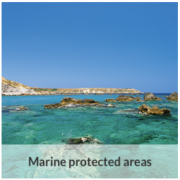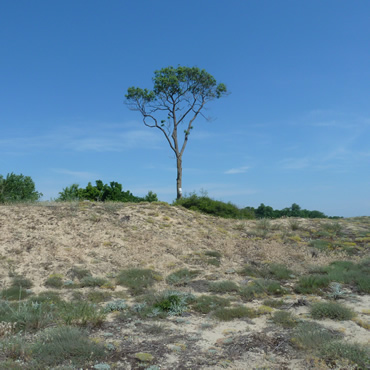0.25 degree
Type of resources
Available actions
Topics
Keywords
Contact for the resource
Provided by
Years
Formats
Representation types
Update frequencies
status
Resolution
-
A Group for High Resolution Sea Surface Temperature (GHRSST) global Level 4 sea surface temperature analysis is produced daily on a 0.25 degree grid at the NOAA National Centers for Environmental Information. This product uses optimal interpolation (OI) by interpolating and extrapolating SST observations from different sources, resulting in a smoothed complete field. The sources of data are satellite (AVHRR) and in situ platforms (i.e., ships, buoys, and Argo floats above 5m depth), and the specific datasets employed may change over time. In the regions with sea-ice concentration higher than 30%, freezing points of seawater are used to generate proxy SSTs. A preliminary version of this file is produced in near-real time (1-day latency), and then replaced with a final version after 2 weeks. The v2.1 is updated from the AVHRR_OI-NCEI-L4-GLOB-v2.0 data. Major improvements include: 1) In-Situ ship and buoy data changed from the NCEP Traditional Alphanumeric Codes (TAC) to the NCEI merged TAC + Binary Universal Form for the Representation (BUFR) data, with large increase of buoy data included to correct satellite SST biases; 2) Addition of Argo float observed SST data as well, for further correction of satellite SST biases; 3) Satellite input from the METOP-A and NOAA-19 to METOP-A and METOP-B, removing degraded satellite data; 4) Revised ship-buoy SST corrections for improved accuracy; and 5) Revised sea-ice-concentration to SST conversion to remove warm biases in the Arctic region (Banzon et al. 2020). These updates only apply to granules after Jan. 1st, 2016. The data pre 2016 are still the same as v2.0 except for metadata upgrades. Version Description:
-
GDS2 Version -The Advanced Microwave Scanning Radiometer 2 (AMSR2) was launched on 18 May 2012, onboard the Golbal Change Observation Mission - Water (GCOM-W) satellite developed by the Japan Aerospace Exploration Agency (JAXA). The GCOM-W mission aims to establish the global and long-term observation system to collect data, which is needed to understand mechanisms of climate and water cycle variations, and demonstrate its utilization. AMSR2 onboard the first generation of the GCOM-W satellite will continue Aqua/AMSR-E observations of water vapor, cloud liquid water, precipitation, SST, sea surface wind speed, sea ice concentration, snow depth, and soil moisture. AMSR2 is a remote sensing instrument for measuring weak microwave emission from the surface and the atmosphere of the Earth. From about 700 km above the Earth, AMSR2 will provide us highly accurate measurements of the intensity of microwave emission and scattering. The antenna of AMSR2 rotates once per 1.5 seconds and obtains data over a 1450 km swath. This conical scan mechanism enables AMSR2 to acquire a set of daytime and nighttime data with more than 99% coverage of the Earth every 2 days. Remote Sensing Systems (RSS, or REMSS), providers of these SST data for the Group for High Resolution Sea Surface Temperature (GHRSST) Project, performs a detailed processing of AMSR-E instrument data in two stages. The first stage produces a near-real-time (NRT) product (identified by "rt" within the file name) which is made as available as soon as possible. This is generally within 3 hours of when the data are recorded. Although suitable for many timely uses the NRT products are not intended to be archive quality. "Final" data (currently identified by "v8" within the file name) are processed when RSS receives the atmospheric mode NCEP FNL analysis. The NCEP wind directions are particularly useful for retrieving more accurate SSTs and wind speeds. The final "v8" products will continue to accumulate new swaths (half orbits) until the maps are full, generally within 2 days.
-

-

These gridded products are produced from the following upstream data: - for satellites SARAL/AltiKa, Cryosat-2, HaiYang-2B, Jason-3, Copernicus Sentinel-3A/B, Sentinel-6 MF, SWOT Nadir => NRT (Near-Real-Time) Nadir along-track (or Level-3) SEA LEVEL products (DOI: https://doi.org/10.48670/moi-00147) delivered by the Copernicus Marine Service (http://marine.copernicus.eu/ ). The gridded product is based on near-real-time (NRT) Level-3 Nadir datasets for the period from July 1, 2024, to December 31, 2024. => MY (Multi-Year) Nadir along-track (or Level-3) SEA LEVEL products (DOI: https://doi.org/10.48670/moi-00146 ) delivered by the Copernicus Marine Service (CMEMS, http://marine.copernicus.eu/ ). The gridded product is based on MY Level-3 Nadir datasets for the period from March 28, 2023, to June 30, 2024. - for SWOT KaRIn : the L3_LR_SSH Expert v2.0.1 product distributed by AVISO (DOI: https://doi.org/10.24400/527896/A01-2023.018) from March 28, 2023 to December 31, 2024. One mapping algorithm is proposed: the MIOST approach which give the global SSH solutions: the MIOST method is able of accounting for various modes of variability of the ocean surface topography (e.g., geostrophic, barotrope, equatorial waves dynamic, etc.) by constructing several independent components within an assumed covariance model.
-

-
A Group for High Resolution Sea Surface Temperature (GHRSST) global Level 4 sea surface temperature analysis produced daily on a 0.25 degree grid at the NOAA National Climatic Data Center. This product uses optimal interpolation (OI) using data from the Advanced Very High Resolution Radiometer (AVHRR) Pathfinder Version 5 time series (when available, otherwise operational NOAA AVHRR data are used), the Advanced Microwave Scanning Radiometer-EOS (AMSR-E), and in situ ship and buoy observations. A second similar product is available back to 1981 that includes only in situ and AVHRR Pathfinder data in its analysis. The OI analysis is a daily average SST that is bias adjusted using a spatially smoothed 7-day in situ SST average and is thus tuned to about 0.3 meter. Both day and night satellite fields are independently bias adjusted. More information is available at http://www.ncdc.noaa.gov/oa/climate/research/sst/oi-daily.php
-
Water_body_chlorophyll-a - Monthly Climatology for the European Seas for the period 1960-2023 on the domain from longitude -45.0 to 70.0 degrees East and latitude 24.0 to 83.0 degrees North. Data Sources: observational data from SeaDataNet/EMODnet Chemistry Data Network. Description of DIVA analysis: The computation was done with the DIVAnd (Data-Interpolating Variational Analysis in n dimensions), version 2.7.12, using GEBCO 30sec topography for the spatial connectivity of water masses. Horizontal correlation length and vertical correlation length vary spatially depending on the topography and domain. Depth range: 0.0, 5.0, 10.0, 15.0, 20.0, 25.0, 30.0, 35.0, 40.0, 45.0, 50.0, 55.0, 60.0, 65.0, 70.0, 75.0, 80.0, 85.0, 90.0, 95.0, 100.0, 125.0, 150.0, 175.0, 200.0, 225.0, 250.0, 275.0, 300.0, 325.0, 350.0, 375.0, 400.0, 425.0, 450.0, 475.0, 500.0, 550.0, 600.0, 650.0, 700.0, 750.0, 800.0, 850.0, 900.0, 950.0, 1000.0, 1050.0, 1100.0, 1150.0, 1200.0, 1250.0, 1300.0, 1350.0, 1400.0, 1450.0, 1500.0, 1550.0, 1600.0, 1650.0, 1700.0, 1750.0, 1800.0, 1850.0, 1900.0, 1950.0, 2000.0, 2100.0, 2200.0, 2300.0, 2400.0, 2500.0, 2600.0, 2700.0, 2800.0, 2900.0, 3000.0, 3100.0, 3200.0, 3300.0, 3400.0, 3500.0, 3600.0, 3700.0, 3800.0, 3900.0, 4000.0, 4100.0, 4200.0, 4300.0, 4400.0, 4500.0, 4600.0, 4700.0, 4800.0, 4900.0, 5000.0, 5100.0, 5200.0, 5300.0, 5400.0, 5500.0 m. Units: mg/m3. The horizontal resolution of the produced DIVAnd analysis is 0.25 degrees.
-

-

These gridded products are produced from the following upstream data: - for satellites SARAL/AltiKa, Cryosat-2, HaiYang-2B, Jason-3, Copernicus Sentinel-3A&B, Sentinel 6A, SWOT Nadir => NRT (Near-Real-Time) Nadir along-track (or Level-3) SEA LEVEL products (DOI: https://doi.org/10.48670/moi-00147) delivered by the Copernicus Marine Service (CMEMS, http://marine.copernicus.eu/ ). The gridded product is based on NRT L3 Nadir datasets for the period from July 1, 2024, to December 31, 2024. => MY (Multi-Year) Nadir along-track (or Level-3) SEA LEVEL products (DOI: https://doi.org/10.48670/moi-00146 ) delivered by the Copernicus Marine Service (CMEMS, http://marine.copernicus.eu/ ). The gridded product is based on MY L3 Nadir datasets for the period from March 28, 2023, to June 30, 2024. - for SWOT KaRIn : the SEA LEVEL products L3_LR_SSH (V2.0.1) delivered by AVISO for Expert SWOT L3 SSH KaRin (DOI: https://doi.org/10.24400/527896/A01-2023.018) for the period from March 28, 2023 to December 31, 2024. One mapping algorithm is proposed: the MIOST approach which give the global SSH solutions: the MIOST method is able of accounting for various modes of variability of the ocean surface topography (e.g., geostrophic, barotrope, equatorial waves dynamic …) by constructing several independent components within an assumed covariance model.
-

 Catalogue PIGMA
Catalogue PIGMA